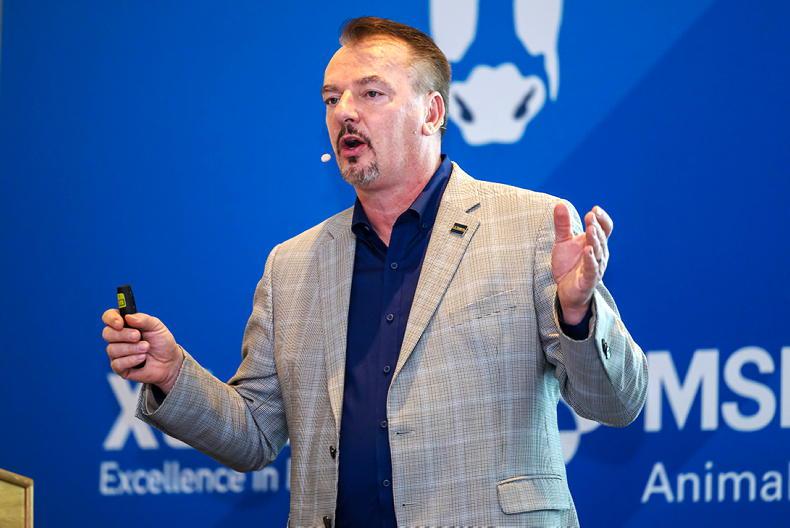Managing and reducing methane emissions from livestock can result in money-making opportunities for the farming sector, professor and air quality specialist Prof Frank Mitloehner has claimed.
He told vets how dairy farmers in California are cashing in on methane by covering slurry stores and selling the biogas captured to undergo conversion into a transport fuel.
“There is now a new goldrush in the state of California to put these covered lagoons in. They make ecological sense and environmental sense,” the professor commented.
Mitloehner stated that California’s policymakers were pursuing a carrot rather than a stick approach to reducing emissions.
“In my opinion, methane is a super opportunity, because if we reduce that, for example for our livestock herds, then that has a short-term impact on warming,” he said.
“We are, as a livestock sector, part of a livestock solution. Methane is really nothing else but energy. You can burn it to make power or you can convert it into fuel to drive vehicles – it’s energy.
“We don’t want to waste methane just like you don’t want to leave your windows and doors open in the winter.”
The move allows dairy farmers to cut emissions while also allowing the transport sector to push down its emissions, as diesel is replaced by the “renewable natural gas” product that results from processing the slurry biogas.
The system generates low-carbon fuel credits which farmers can cash in on. Although credits dropped in value, they can represent around a third of participating farmers’ income.
Many options
The US researcher told the Irish Farmers Journal there are many options available to the farming sector to reduce emissions that do not require a cattle cull.
Mitloehner suggested methane-lowering feed additives, the breeding of lower emitting cows and improvements to soil carbon sequestration as examples of the practices farmers can implement to reach climate goals.
“While some people – often times the less knowledgeable ones – say let’s go the route of herd size reductions, we can achieve those emissions reductions in many different ways,” he said.






 This is a subscriber-only article
This is a subscriber-only article










SHARING OPTIONS: